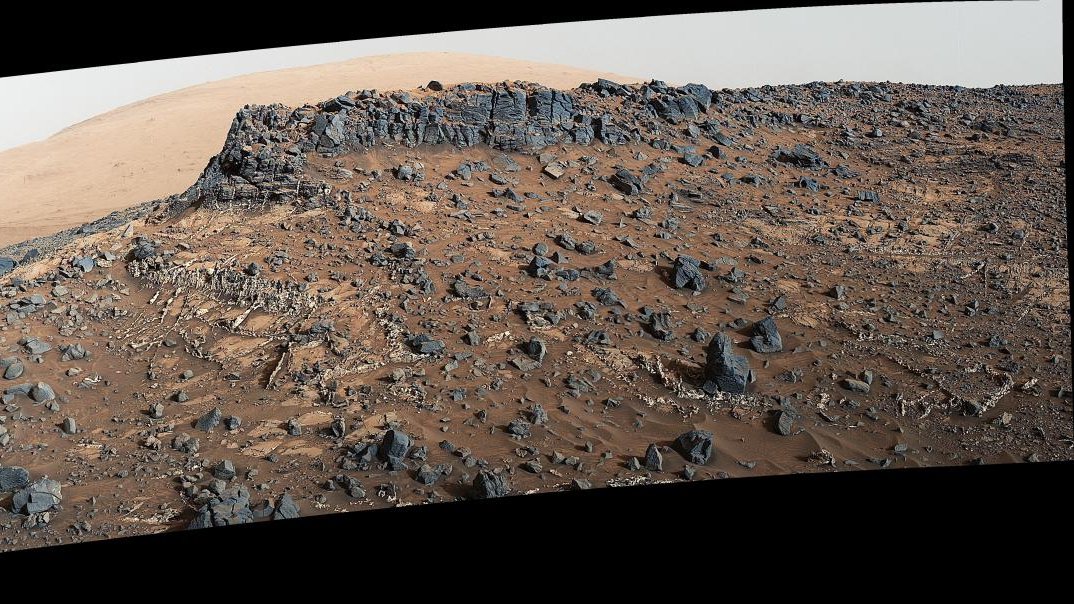Nasa's Curiosity rover is exploring a 'Garden City' on Mars
To find out more about its weird mineral veins

Back in March, Nasa's Curiosity rover trundled through a region of the surface of Mars named 'Garden City'. This area is criss-crossed with mineral veins, which stick up above the surface of the surrounding dirt, making it an ideal place to study the composition of those minerals.
To do so, researchers used Curiosity's 'ChemCam' instrument, which fires lasers at objects and analyses the sparks they give off to find out what they're made of. It turns out that they're pretty diverse, with lots of different chemical ingredients.
It's thought that the veins were formed long ago during several wetter periods in the history of the Red Planet. As water flowed through fractures in the bedrock, it carried dissolved minerals which were deposited when the water dried up again.
In different wet periods, different minerals were deposited - explaining the diversity that Curiosity found.
Very Enigmatic
The analysis was made possible by an upgrade that Nasa's engineers have recently completed. It more than tripled the number of geochemical samples that the system can recognise, allowing a far wider range of substances to be spotted and categorised.
"The chemistry at Garden City would have been very enigmatic if we didn't have this recalibration," said Diana Blaney, a Curiosity science team member.
Next up, the plucky rover is heading to higher, younger parts of the mountain that it's currently exploring - Mount Sharp. By comparing the make-up of the rocks in different regions, researchers should be able to gain a better understanding of Mars' complex history.
Get daily insight, inspiration and deals in your inbox
Sign up for breaking news, reviews, opinion, top tech deals, and more.
